Reality as we make it
Ghibli's Ponyo, parallel memories, and the brain’s power to shape reality
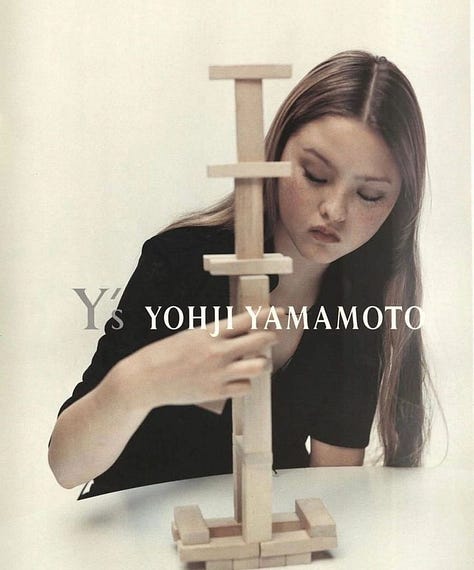
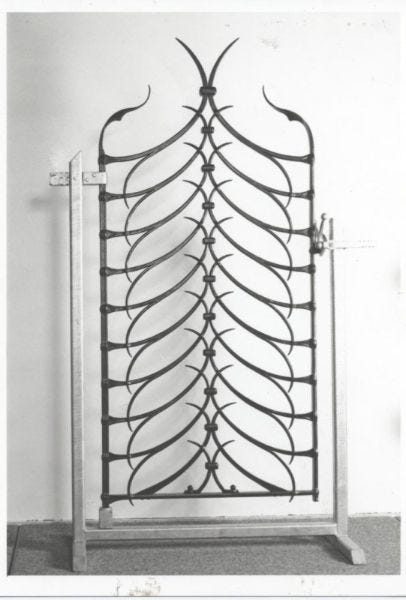

The Ponyo paradox
I was updating my Letterboxd account, scrolling through movies I had seen, when I stumbled upon something impossible: Ponyo was listed as a 2008 release. That couldn't be right. I had owned the DVD as a child. It had been a gift for one of my birthdays, wrapped alongside a South Park mug and t-shirt. I could picture it perfectly: the case in my hands, the vibrant cover, the excitement of unwrapping it. And yet, here was recorded reality, telling me that the movie hadn't even existed back then.
This was an absolute impossibility. My memory and objective reality were in conflict. And so, I began questioning: had I experienced a timeline glitch? A Mandela Effect? A shift in reality that my conscious mind couldn’t fully grasp?
Memory, time, and the fabric of reality
The phenomenon of misremembering details is often chalked up to false memories: a well-documented cognitive effect where the brain reconstructs events inaccurately. Psychologists like Elizabeth Loftus have demonstrated how memories can be manipulated or influenced by external factors. And yet, the nature of time, as we understand it, remains uncertain. The Many-Worlds Interpretation of quantum mechanics suggests that all possible realities exist simultaneously, branching off like infinite pathways. Could my Ponyo memory be a glimpse into a reality that once was - before I shifted into this one?
This strange conflict between personal memory and objective records has been called the Mandela Effect: the phenomenon where large groups of people remember an event, fact, or detail differently from how history records it. The name comes from the widespread belief that Nelson Mandela died in the 1980s in prison, despite his actual passing in 2013. Other examples include Monopoly’s Rich Uncle Pennybags supposedly having a monocle (he never did), and the famous misquote, “Luke, I am your father” (the real line is “No, I am your father”). These inconsistencies fuel speculation: Are they just shared cognitive distortions, or could they hint at reality shifts, glitches, or alternate timelines merging?
The role of the mind in reality creation
A big part of me is embarrassed to share this but for the past two years, I’ve practiced timeline-jumping meditations. My hesitation comes from my frustration with most mindset coaches: many of whom feel unskilled, performative, or aligned with the wellness-far-right pipeline. Initially, I approached these meditations with skepticism, but I noticed something undeniable: they changed my mindset, and my mindset changed my outcomes. The more I embraced the idea that I could shift timelines - whether metaphorically or literally - the more my reality seemed to rearrange itself in my favour. Situations resolved themselves. Often after a meditation like that, I felt limitless. As if I upgraded my self trust to the perfect level.
Carl Jung’s theories on the collective unconscious and synchronicity suggest that reality might not be as static as we believe. Schema therapy and parts work propose that our subconscious beliefs - especially unaddressed traumas - actively shape our experiences. If we accept that our internal world influences the external, how much of reality is meemaken, the Dutch term that - if taken literally - encapsulates the idea of collectively creating reality?
The thin line between empowerment and fantasy
Of course, reality creation can also be seen as a fantasy. A comforting illusion in a world where human existence is often marked by powerlessness. If universal consciousness is experiencing itself through us, then free will might be our greatest gift and our greatest curse. The desire to “manifest” a different life could be an escape from the constraints of reality, a coping mechanism for chaos. But does that make it any less real?
Even if shifting timelines is purely psychological, mindset work is powerful enough to actualise real change. Neuroscience shows that reframing thoughts rewires the brain. Optimism increases resilience. The placebo effect - where belief alone can cause physical healing - demonstrates the tangible effects of perception.
Questioning the nature of reality
So, did I truly jump timelines, or was my mind just doing what it does best: filling in gaps to create a story that feels true? Was my Ponyo memory evidence of a shift in reality, or simply my brain piecing together an impossible past to resolve a contradiction? Does it matter? Whether reality shifts externally or simply within, the end result is the same: we shape our experience of life. Perhaps reality is neither something we are subjected to nor something we fully control - but something we are forever in the process of creating.
And if that’s the case, then maybe the most important question isn’t whether timeline jumping is real - but rather, what reality do I want to create next? One where I believe myself to be - even in part - the master of my fate? Or one where I see myself as a victim of my past or circumstances?
Tools for mindset work & reality creation
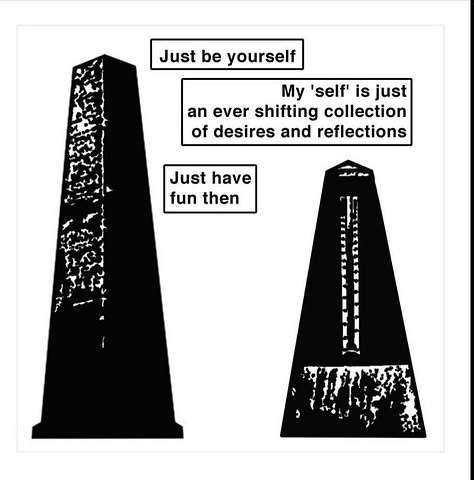
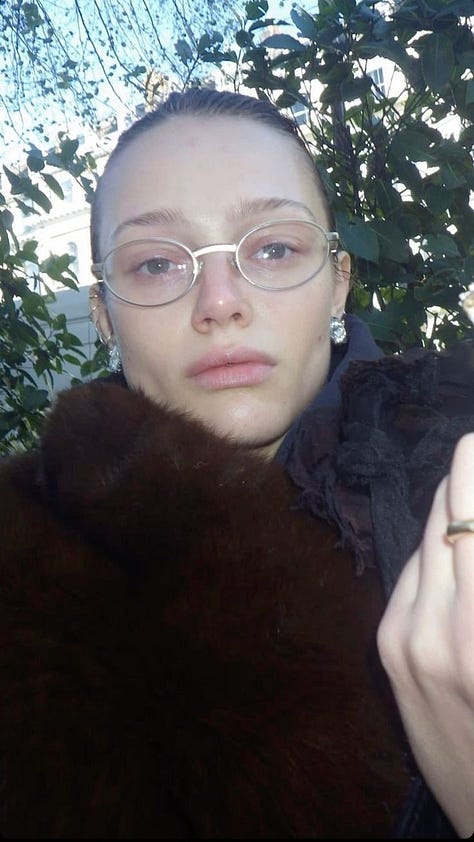

I actively use tools that help me navigate and shape my mindset, aligning my inner world with the external one I want to live in.
I talked briefly about this in my first letter, but I want to share more and more about these tools in every Soft Realm substack, to slowly help you understand and integrate them in your life if you like. I’ll dive deeper into every subject in the coming months, after I’ve introduced you to all of them.
I have a tool system for myself that I’m currently optimising to share soon with others. The pillars are simple but powerful:
ROOTED BODY (this is the foundation of everything. A body that is grounded + healthy. I’m using somatic techniques, stretches, movement, posture techniques, diet and self massage.)
CLARITY OF MIND (alchemising noise + mindset work)
VISION CREATION (envisioning + productivity)
COMMUNITY + CREATIVITY (external world communication + actualisation)
here are some of the most powerful mindset work methods I've integrated into my life:
Parts work & shadow work
This might be the most difficult one, but also the most powerful tool. We all have different parts within ourselves with different needs, wants, and even sometimes recollection of past experiences. Some are more sensitive than others in certain situations, while others are more brave. Some are trusting, while others are prepared for betrayal. The moment I discovered parts work, my whole life and perception of self changed. I always felt like there were conflicting parts within me and thought something was wrong with me. But everyone has them, and you can learn how to work with them, in stead of suppressing them. When I experience tension, I hold what I call town hall meetings with all my internal parts. Ensuring each part gets what it needs (this can be new information or a pep talk) so they can act in alignment rather than in conflict. I see tension as data: a signal about my desired path or unmet needs. When all parts are heard, I take action steps to ensure they are well fed and loved. This way I can move forward authentically, with clarity and confidence. Shadow work is by source a Jungian practice, and the modern psychology version of this -although a bit different - is called Schema therapy.
Expression journaling
When overwhelmed, I write everything that comes to mind down, letting my thoughts flow uncensored. This clears mental clutter and makes space for positive perspectives. You don't really need prompts for this one, but what is helpful when you don't know where to start is feeling where the tension is located in your body and being fully present with it: asking it how it feels and why. If you're already having heated conversations in your head, you can just write those down, remember there are not rules and chronology is not important at this time. Something I try to remember when I ruminate, my body needs to release energy through movement and writing. It can really be that simple.
Daily self-inquiry
Each day, I ask myself: What am I avoiding? Identifying avoidance patterns stops stagnation and frees up my energy. It can be anything from postponed admin tasks to suppressed feelings, or something I forgot. Some things only surface after months! Its a beautiful journaling practice.
Mindset meditations
These include NSDR (Non-Sleep Deep Rest) sessions for when I'm tired or overwhelmed but need to be productive, and timeline-jumping meditations (I call them zero-point meditations) for when I need a bigger shift. In these, I "dissolve" my current reality in the void, step through an envisioned portal, and meet my limitless self. This method is inspired by Pea the Feary / Realization by Pea.
Vision boarding
Physical vision boards work best for me. Tangible, visual reminders of where I’m headed. I start in Figma, collaging images from online libraries, arena, cosmos, pinterest, or other sources, and print them before cutting and glueing on a thicker surface. You can also use a big notebook! There is some neuroscience behind this envisioning of your desired path / life. And for my fellow neurodiverse readers: its powerful to have physical reminders that you can come back to as often as you like. To me this is as powerful as my habit / productivity systems.
Aligned action lists
From self-reflection, I create lists of small, actionable steps that align with my needs and desires. The satisfaction of crossing off tasks - whether on paper or digitally - provides a constructive dopamine release, reinforcing progress and clarity. Make sure to have an empty day list every evening, and an empty week list every weekend. Unlike the toxic dopamine loops of social media doomscrolling, this practice fosters genuine momentum and intentional focus.
Neuroscientific tools for mindset work:
Cognitive defusion: I practice techniques that help me recognise thoughts as passing mental events rather than absolute truths. By labelling and observing them without attachment, I reduce the power of negative self-talk and prevent it from shaping my identity.
Overcoming people-pleasing: I try to recognise when I'm prioritising others over myself - or being more interested in understanding the people that hurt me than in experiencing and respecting my pain - and practice setting firm boundaries. Not easy but very important.
Incremental self-trust building: Instead of waiting for confidence, I take small, aligned actions that reinforce self-trust. This can even take the shape of promising to listen to my body: drinking water when I’m thirsty and pee when I need to pee. Somatic trust building is extremely important for people that have endured physical betrayal / sexual trauma (which is most women), especially when that happened on a young age.
Neuroplasticity engagement: I engage in new learning experiences and visualisation techniques that actively reshape my brain’s wiring. It’s important to avoid stagnancy in all shapes or forms, since stagnancy is a breeding ground for spiraling and toxicity. more on that later :)
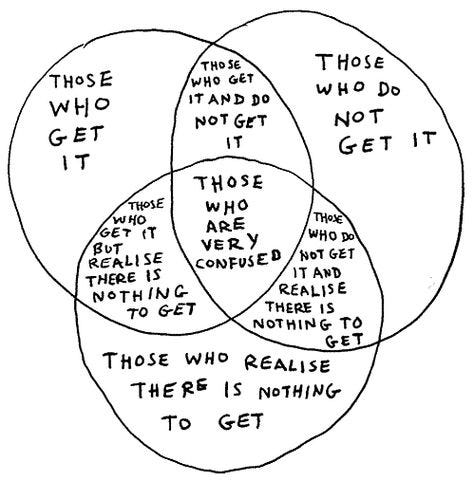
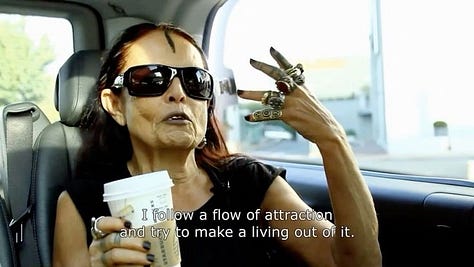

david shrigley, michele lamy, gucci campaign The science of reality
Reality creation may not have one single scientific explanation, but different fields offer insights into how our perception of reality is shaped.
From a psychological perspective, cognitive science supports self-fulfilling prophecies - where expectations influence behaviours and outcomes. The placebo effect demonstrates how belief alone can create real physiological changes, and neuroplasticity shows that deliberate thought patterns can rewire the brain over time.
In quantum mechanics, the observer effect suggests that measurement influences quantum states, leading some to speculate about the role of consciousness in shaping reality. The Many-Worlds Interpretation proposes that all possible realities exist simultaneously, though it does not confirm our ability to shift between them at will.
From a sociological and philosophical perspective, concepts like social constructionism argue that collective beliefs shape reality, while existential philosophy debates whether free will enables us to meaningfully direct our lives or if we are simply navigating predetermined systems.
Whether reality is shifting or whether we are the ones shifting within it, one thing remains clear: the more intentional we are, the more we create lives that feel aligned, expansive, and free.
In the meantime of writing this substack, I got my answers regarding the Ponyo quest. I texted a childhood friend about the situation, and she told me how she remembered it: she and her friend J didn’t give me the DVD on that birthday, but me and J watched Ponyo together a decade later in Amsterdam, and he either gave it to me (for my birthday?) or borrowed it to me - which would explain me remembering seeing the DVD at my parents place during my twenties.
There is so much to dive into and explore together. Do you want a guide on any of the points above? Let me know in the comments or DM me, I would love to know what you want me to write next! To conclude this letter, I have some journaling prompts for you:
Journaling exercises: shaping reality from within <3
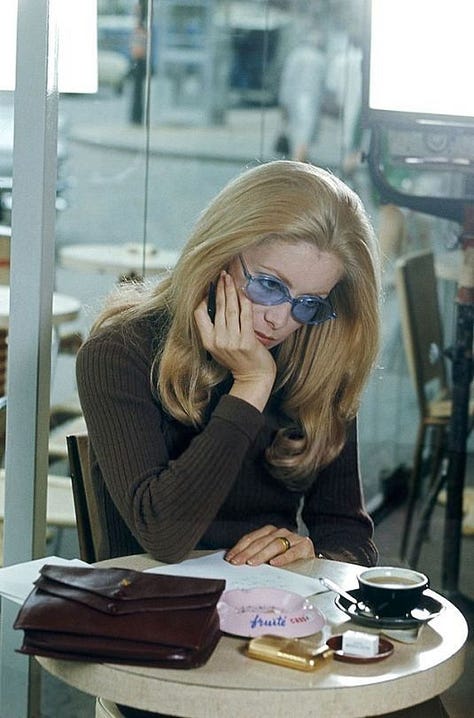


1. When mindset changed your reality
Reflect on a time when shifting your mindset changed your external experience. it could be something subtle, like expecting ease and noticing doors opening, or something profound, like a belief shift that led to a new opportunity or relationship, or a shift in mindset during conflict that led to a resolve.
what were you thinking or believing before the shift?
what changed internally that caused your external world to respond differently?
how did it feel to realise that your perspective had power over your reality?
2. What reality are you creating now?
We are constantly shaping our reality, whether we do so intentionally or not. Our thoughts, beliefs, and subconscious patterns influence what we notice, how we respond, and what opportunities or limitations we perceive. The question is: are you creating a reality that aligns with your deepest desires, or are you reinforcing an outdated version of yourself?
Step 1: your current reality narrative
Describe your present-day reality as if you were narrating it in a book. Try to be neutral, non judgemental.
what themes dominate your life right now? growth, stagnation, healing, discovery, escapism?
what patterns keep repeating in your experiences?
if your life were a story, what role would you be playing right now, in this moment, or in recent past? the seeker, the creator, the bystander, the overcomer?
what emotions do you most often wake up with? what is the general tone of your inner world? You can also take some days to observe and reflect.
Step 2: what’s beneath this reality?
If your external world reflects your internal world, what subconscious beliefs might be shaping it?
are there stories you are unconsciously telling yourself? that things never work out, that you must prove yourself, that you are always taken care of?
what fears or limiting beliefs might be keeping this reality in place? What do you want, but think is not possible for you?
are there unspoken desires or emotions that you have not fully acknowledged?
Step 3: choosing a new reality frequency
If you could shift timelines today - right now - into a version of your life that feels more aligned - or just more of what you would want the most, if everything was possible - what would it look like? describe it vividly.
how would your days feel different? Your mornings?
how would you show up differently?
what would be present in your life that is not there now?
what would no longer hold power over you?
what core belief would this version of you live by?
step 4: the bridge between here and there
I believe that the future version of you that you can imagine with your deepest desires in mind , already exists - you only need to align with them. ask yourself:
what is one small, tangible action i can take today that brings me closer to this new reality?
what is one thought or belief i can practise daily to reinforce this shift?
get real with yourself: what is one thing i need to let go of to step into this new timeline?
your reality is not fixed, and neither are you. every moment is a chance to recalibrate.
bonus prompt: If you can imagine a future with ease, and clearly see a fully resourced and actualised self: then write a letter from your future self to your present self.
Offering encouragement, wisdom, and clarity about how you made the shift. Stay as long (and repeat as often) as you can and like in this visualisation of your most desired, resourced and actualised self. New neuro-pathways need to be formed so you’ll see and can grab opportunities when they shows themselves in your life. People that never visualise their ideal life and self will often overlook opportunities to get there.
I hope this was helpful. I would really love to hear from you! questions, discussions, realisations, everything is welcome. <3
Xoxo Romy



